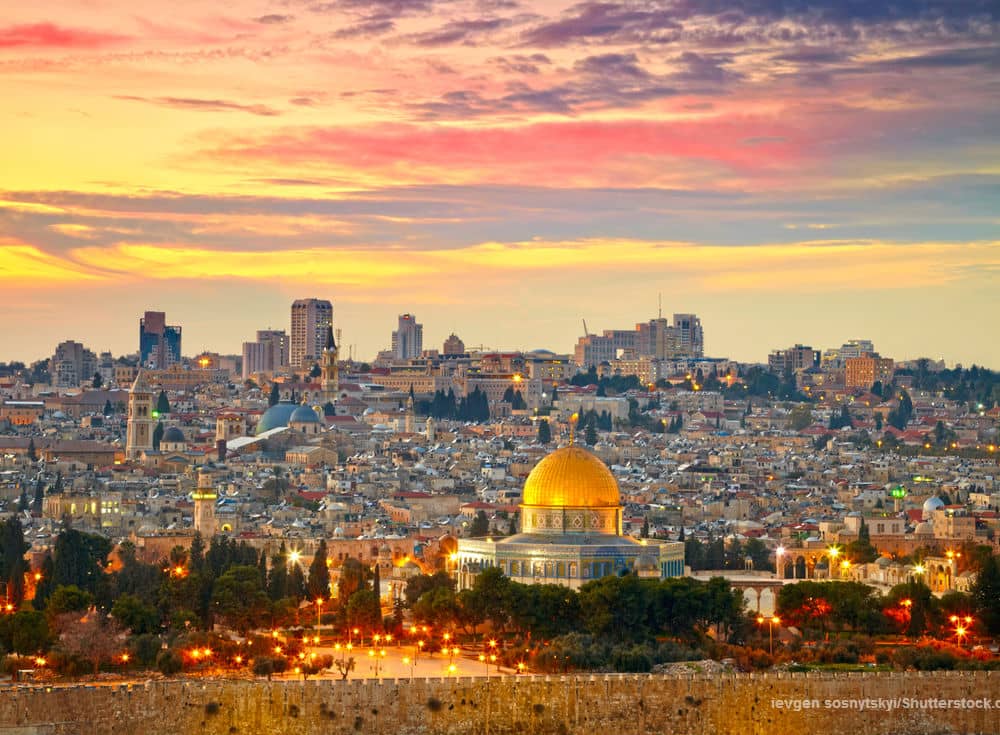"Now think of the meaning of the food that we put into our bodies, and we'll begin with the bracha (blessing) before we eat," Ophir said.
"Think about what it means to eat a grape, to eat an apricot or a nut. What it means to feel the food, to taste the food, to sense it. Now take a deep breath and see if we can recreate the sensations of the eating and elevate those sparks of holiness within the food."
In teaching Jewish meditation, Ophir, 52, has become one of a long line of Orthodox Jews to adopt practices often associated with Eastern religions. Others include Sarah Eiger Hertzberg, an artist who teaches about the circular mandala designs used in Buddhism and Hinduism, and Diane Bloomfield, who uses yoga to experience the meaning of liturgical and biblical verses.
But rather than choose one tradition over another, Ophir, Eiger Hertzberg, and Bloomfield are fusing Orthodox Judaism--often considered inflexibly traditional--with alternative practices that in the West are typically considered nontraditional.
Now, they are teaching others how to do the same.
Ophir, whose appearance and personal history make him seem an unlikely meditation teacher, combines the spiritual with the textual: He teaches from a seven-page booklet of Talmudic and rabbinic sources related to eating before he moves on to the meditation. Ophir grew up Orthodox in Philadelphia before moving to Israel in 1974 and studying at a yeshiva for seven years, where he was ordained as a rabbi. Two years ago, he founded the Meorot Center for Holistic Spirituality, based at a Jerusalem synagogue.
For Ophir, there is no dichotomy between traditional Orthodoxy and meditation. He rejects the popular conception of meditation as an "Eastern influence."
"Meditation is inherent to Judaism," Ophir said, and Jewish prayer is a form of meditative practice. "It's not just reciting the words--it's feeling the words, it's experiencing love and awe through the words."
Stanley Schneider, a supervising psychoanalyst who heads the Integrative Psychotherapy Program at the Hebrew University of Jerusalem, said he has seen an increased number of Israelis searching for spirituality for the past two years, although others said such a rise goes back at least a few years more.
"People turn to these (spiritual) things during times of uncertainty, times of conflict, times of crisis--and I think that's probably a good way to describe recent times," Schneider said.
Some people meld Judaism with meditation by focusing on Hebrew letters, the sacred "Shema Yisrael" verse ("Hear O Israel, the Lord our God, the Lord is one"), or just the word "Shema."
"People relate very much to the idea that the Shema is a Jewish mantra," said Rabbi Avraham Arieh Trugman, who has been teaching about meditation and spirituality for 30 years. Although he uses a Sanskrit word to refer to a mystical incantation, Trugman cites the mystical books of the Kabbalah as evidence that meditation has an established history in Judaism.
But Yitzhak Ginsburgh, a Lubavitch rabbi who writes and lectures about Kabbalah, said there is a uniquely Jewish approach to spirituality--and that practices intimately connected with non-monotheistic religions cannot be part of it.
Nonetheless, Eiger Hertzberg, an Israeli artist in her 40s who became religious at age 28 through the Lubavitch Hassidic sect, sees no problem with using the mandala symbols to represent concepts ranging from the sun to the flames of Sabbath candles, or with facilitating meditation through art.
"I don't think there's a contradiction between what I'm doing and religious issues," said Eiger Hertzberg, who lives in Jerusalem. "It's the search for spirituality through art."
Eiger Hertzberg said she often teaches religious Jews "who feel they are missing the personal and more creative side of worshipping God."
For people like Bloomfield, that worship is conducted through the body. Each morning, religious Jews thank God for "straightening the bent." Reciting that prayer, Bloomfield, 46, stretches her arms over her head and her feet into the floor, a yoga posture called the mountain pose.
"It's the physical practice that's kind of a metaphor or a reflection of your spirit. It's all about wherever you're at, going a little bit more -- even if it's just imagining your spine lengthening," said Bloomfield, the author of "Torah Yoga: Experiencing Jewish wisdom through classic postures."
Bloomfield, who lives in Jerusalem, sees yoga as "a way to learn Torah in a different way -- a way that includes an experiential consciousness of the body."
Although Ophir was raised in a religious Jewish home, many other Orthodox practitioners of traditions associated with the East, including Bloomfield and Eiger Hertzberg, are "ba'alei teshuva"--the Hebrew phrase for Jewish people who become religious.
"I think for me, bringing in the yoga helps me to really make this real in my life and not a good idea or some kind of dazzling spiritual thought," said Bloomfield, a Minnesota native who became Orthodox 20 years ago. "I think you have to bring your whole self into being religious.

